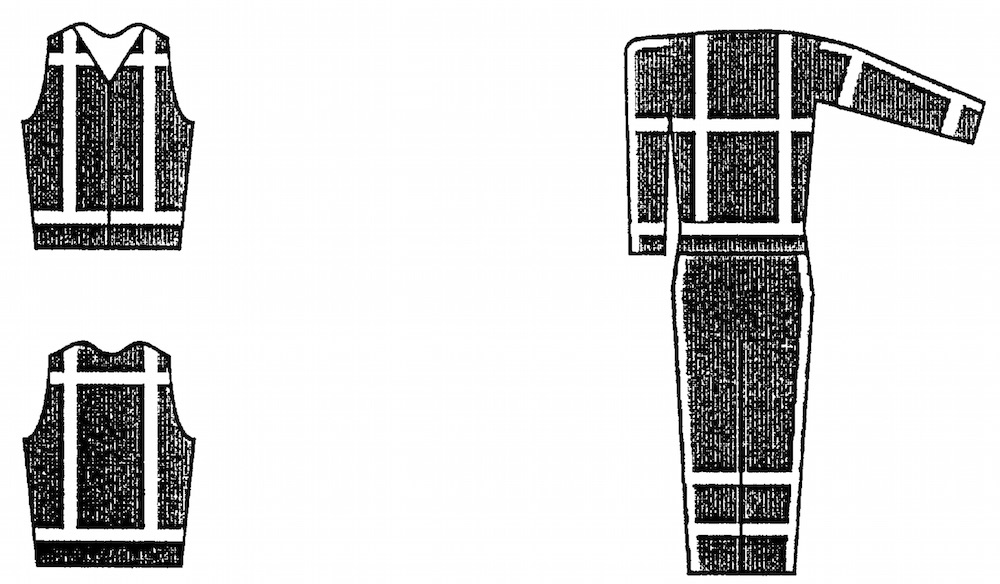The ATEX directive requires from employers several measures to eliminate dangerous sources of ignition in an explosive environment. In addition, they are obliged to create a healthy and safe working environment for workers in hazardous explosive atmospheres. This directive is therefore included in national occupational health and safety laws and regulations.
Part of ATEX 137 is a risk inventory to identify hazardous areas, whereby all possible operating conditions and environmental conditions should be taken into account. In cases where workwear is assessed as a potential ignition source, the employer is obliged to provide electrostatic dissipative protective clothing and personal protective equipment. The extent to which clothing and personal protective equipment should be dissipative, depends on the defined ATEX zone, the various explosion groups and the minimum ignition energy of the explosive vapors, gas and dust.
Protective clothing and PPE for ATEX
Until recently it was considered sufficient for use in an ATEX environment that protective clothing met EN 1149-5 standard. However, recently SUCAM document (Selection, Use, Care and Maintenance) PPE for preventing electrostatic risks in hazardous areas (explosive atmospheres) was published. This SUCAM handles all types of personal protective equipment including protective clothing.
It appears that for protective clothing only EN 1149-5 is in some cases insufficient.
Protective clothing should also be flame-retardant and, if non-antistatic components are applied on the outside of the clothing, they may, depending on the zone and explosion group, not exceed certain dimensions. There are now companies that bring specific ATEX protective clothing on the market. Refer to the selection tool.
Protective clothing for use in roadwork is specified in "Guidelines and Specifications for Road Safety clothing", Rijkswaterstaat, Adviesdienst Verkeer en Vervoer, October 1995.
In addition, in the publication "Measures on motorways', CROW, edition October 2013 information is provided on the selection of protective clothing for road workers.
Both publications refer to EN 471. In 2013, this standard has been superseded by EN ISO 20471.
In summary, the following requirements apply:
- The clothing must comply with EN ISO 20471.
- On and aside national highways only high visibility clothing in accordance with class 2 or 3 is permitted, wherein class 2 for waistcoats and jackets and class 3 for coveralls and suits applies.
- Only fluorescent orange-red is permitted.
- Waistcoats have two horizontal retroreflective bands around the body. (Note Clearmark: if the upper horizontal band at shoulder blade height is provided, there is no question of a full encirclement such as EN ISO 20471 prescribes. This can have an impact on the area classification).
- Waistcoats are also provided with a vertical retroreflective band on both shoulders which connects the lower horizontal band at the front and back side with one another.
- Jackets, coveralls and suits are equipped with two horizontal retroreflective bands around the torso. The upper band runs just below the armpit.
- Jackets, coveralls and suits are also provided with a vertical retroreflective band on both shoulders which connects the lower horizontal band at the front and back side with one another.
- On the sleeves of jackets, coveralls and suits run two horizontal retroreflective bands at the height of those on the body. In addition, the sleeves on the outer side are provided with a vertical retroreflective band of 25 mm. (Note Clearmark: These bands are not in accordance with the requirements of EN ISO 20471 but are permissible.)
- Coveralls and trousers have two horizontal retroreflective band around the trouser legs and, on the outside, provided with a lengthwise positioned retroreflective band of 25 mm.
- Markings on the outside of the clothing like badges, logos, and service/company names are allowed under the following conditions:
- Per garment max one mark may be affixed to the front and one to the back.
- The pattern of retroreflective bands must not be interrupted by the mark.
- The surface of the mark on the front is max. 70 x 70 mm.
- The mark on the back is between the vertical retroreflective bands and up to 70 mm in height.
- The mark is not retroreflective.
